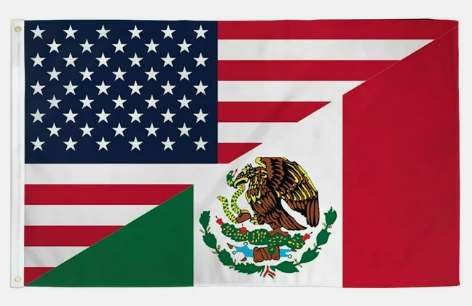Written by: Alejandro Pineda Catalan

Growing up in a first-generation Mexican-American household, holidays always bring delicious cuisines. Despite that, holidays that are dominant in the U.S. and not Mexico aren’t celebrated the same. By growing up and attending school in America, you see what standard American holidays consist of. Television programs like “The Charlie Brown and Snoopy Show” portray what holidays such as Thanksgiving and Christmas mean and how to celebrate them. Unlike those who grew up in the United States, most Mexican parents and individuals were foreign to these festivities, let alone the food meant to be prepared.
As a young kid, along with my siblings and cousins, holidays involved getting together at whichever home could accommodate such a large group. The women would start in the early morning preparing authentic Mexican dishes. At the same time, the men would play cards and enjoy drinks. I can still vividly remember eating uncooked masa from the humongous pot prepared for tamales. Memories such as this one reminds me of all the beautiful Mexican meals we ate for holidays, regardless of whether they were traditional to American culture…
Mexican meals come with various ingredients that, when put together, create some of the most delicious plates in the world. Main dishes like tamales, pozole, and pambazos, are the show’s stars. Any of these could be seen as the turkey or ham in America. Side dishes such as mashed potatoes, yams, macaroni and cheese, etc., are common, especially during holiday dinners. A critical difference between these holiday dishes is that Mexican holiday meals don’t usually need a side dish. Of course, you’ll see rice and beans being served, but each dish named above is a meal on its own. Typically, you eat one main dish and move to the next, and as the night goes on, you end up eating each dish as everyone anticipates the desserts.
Desserts within Mexican culture have become widely popular for a reason: they’re that good. Holidays bring some of the most famous, such as ensalada de frutas, flan, and my favorite, arroz con leche. Aside from desserts, sweet and hot drinks are also prepared to wash down all the delicious food. Rompope and coquito are classics, along with ponche, which can be prepped in many ways and is basically a hot tea with cinnamon and a mix of fruits.
The recipe for these dishes be rooted in different regions within Mexico. Various climate conditions throughout the country contributed to what food was favored in each area. Mexican cuisine is typically noted as using what the agricultural landscape provides, just as they did hundreds of years ago. Many of the meals prepared on these special occasions can be rooted in what our ancestors ate daily. Their agricultural practices created a worldwide cultural phenomenon like other great cuisines today.
A holiday like Thanksgiving allows our families to have some time off from work and enjoy each other’s company. While cooking together and sharing food is a blessing, it is also how we can afford to have such a big meal to satisfy such a large family. With everyone chipping in, it was affordable, convenient, and undoubtedly some of the best memories. Although Thanksgiving was created throughout American history, it is still cherished and celebrated. That is, being with family, close friends, and the ones we love. Mexican culture has had a tremendous impact in the United States; the same can be said with Mexican Americans, who are also influenced by American holidays.
While you’ll still see our table filled with traditional meals, we’ve embraced American culture and love a well-prepared turkey. Over the next decade, I can see both cuisines blended, especially as future generations adapt to American lifestyles. Nonetheless, Mexicans will always stay close to our roots and be thankful for such a cheerful time during the holidays.
Leave a Reply